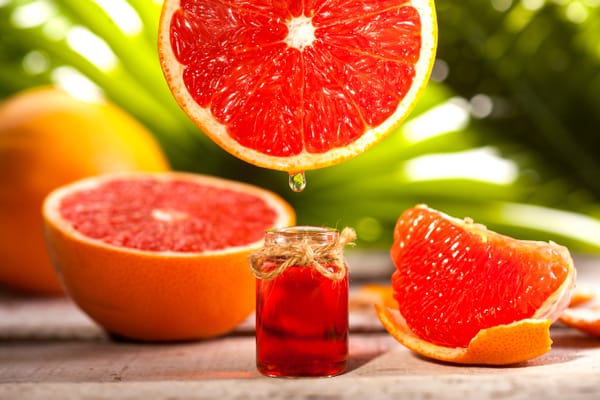What Does Yerba Mate Taste Like? Discover the Flavor
Curious about what does yerba mate taste like? Uncover the unique flavor profile of this South American beverage, from earthy notes to smoky undertones.

Hey there, tea lover! I bet you're wondering, "what does yerba mate taste like?" Well, let me tell you, it's a flavor adventure like no other. Imagine sipping on a cup of earthy, slightly smoky goodness that'll make your taste buds dance. Yeah, that's yerba mate for you!
My taste buds were forever changed when I first experienced this South American staple during my travels in Argentina. The intricate layers of flavor had me hooked from the very first sip, and I knew I couldn't keep this discovery to myself. I had to spread the word about this culinary wonder.
Dive into the world of yerba mate with me, and find out why this unique tea has become a global sensation. Your taste buds are in for a treat!
What Is Yerba Mate and Where Does It Come From?
Yerba mate is a traditional South American drink that's been enjoyed for centuries. It's made from the leaves of the Ilex paraguariensis tree, a plant native to the subtropical forests of Argentina, Paraguay, and other nearby countries.
Origins of Yerba Mate
The indigenous Guaraní people were the first to discover the energizing properties of this holly family tree. They would harvest the leaves, dry them over fire, and steep them in hot water to create a stimulating brew.
Traditional Preparation Methods
Traditionally, yerba mate is prepared in a hollowed-out gourd called a mate or calabash. The dried leaves are placed inside, and hot water is added. A metal straw with a filter on one end, known as a bombilla, is used to drink the infusion.
Cultural Significance in South America
Yerba mate is more than just a beverage in South America - it's a cultural icon. Sharing mate is a social ritual that brings people together, whether it's family, friends, or even strangers. It's not uncommon to see people walking down the street, mate gourd in hand, sipping through the bombilla as they go about their day.
Describing the Taste of Yerba Mate
If you've never tried yerba mate before, you might be wondering what it tastes like. The truth is, the flavor profile of mate can vary quite a bit depending on the type of leaves used and how they're prepared.
Earthy and Herbal Notes
At its core, yerba mate has an earthy, herbaceous taste. Some people describe it as grassy or even slightly smoky. These flavors come from the natural compounds in the mate leaves, which are rich in minerals and antioxidants.
Bitterness Level
One thing that sets yerba mate apart from other teas is its bitterness. The tannins in the leaves give mate a bold, astringent quality that can be an acquired taste for some. However, many people come to appreciate and even crave this unique flavor over time.
Comparison to Green Tea and Coffee
If you're a fan of green tea or coffee, you might find some familiar notes in yerba mate. Like green tea, mate has a vegetal, slightly grassy taste. And like coffee, it has a robust, full-bodied flavor that can wake you up and keep you going.
Variations in Taste Based on Preparation
The way you prepare your mate can also impact its taste. Using hotter water or steeping the leaves for longer can bring out more of the bitter notes. On the other hand, using cooler water or a shorter steep time can result in a smoother, more mellow flavor.
Factors That Influence the Flavor of Yerba Mate
Not all yerba mate tastes the same. There are several factors that can influence the flavor of your brew, from the type of leaves used to the way they're processed.
Types of Yerba Mate (Sin Palo, Con Palo)
One important distinction is between sin palo and con palo yerba mate. Sin palo means "without stems," while con palo includes the stems and twigs of the plant. Sin palo mate tends to have a smoother, less bitter taste, while con palo can be more robust and full-bodied.
Roasting Process
The way the mate leaves are processed can also impact their flavor. Some yerba mate is roasted over an open fire, which can impart a smoky, toasted quality. Other brands use a gentler drying process that preserves more of the leaves' natural flavor.
Blends and Flavored Varieties
While traditional yerba mate is unsweetened, some modern brands offer flavored varieties that incorporate additional ingredients like herbs, spices, or fruit extracts. These blends can add new dimensions to the taste of mate, from refreshing mint to spicy cinnamon.
Water Temperature
As mentioned earlier, the temperature of the water you use can affect the flavor of your mate. Using water that's too hot can scald the leaves and bring out more of the bitter notes. Aim for water that's around 150-160°F for the best results.
Traditional Ways to Prepare and Drink Yerba Mate
If you want to experience yerba mate like a true South American, there are a few traditional methods you should know about.
Using a Gourd and Bombilla
The most authentic way to drink mate is from a mate gourd with a bombilla straw. Fill the gourd about 2/3 full with loose yerba mate leaves, then add hot water. Let it steep for a few minutes, then sip the infusion through the bombilla.
Proper Water Temperature
As I mentioned before, water that's too hot can ruin the flavor of your mate. Aim for a temperature between 150-160°F, or let boiling water cool for a minute before pouring it over the leaves.
Steeping Time
Yerba mate doesn't need to steep for as long as other teas. A few minutes is usually plenty of time to extract the flavor and nutrients from the leaves. If you let it steep for too long, the taste can become bitter and unpleasant.
Social Aspects of Sharing Mate
One of the best parts of the mate experience is sharing it with others. In Argentina and Uruguay, it's common for friends and family to pass around a single gourd, taking turns sipping from the same bombilla. It's a sign of friendship and hospitality that brings people together.
Modern Methods for Enjoying Yerba Mate
While the traditional preparation methods are still popular, there are also more modern ways to enjoy yerba mate that fit into a busy lifestyle.
Yerba Mate Tea Bags
If you don't have time to fuss with loose leaves and gourds, yerba mate tea bags are a convenient alternative. Just steep a bag in hot water for a few minutes, and you're good to go. Some brands even offer flavored options like mint or lemon.
Loose Leaf Yerba Mate
If you prefer the flexibility of loose leaf tea but don't want to use a traditional gourd, you can brew yerba mate in a regular mug or tea filter. Just keep in mind that the leaves are larger than most tea leaves, so you'll need a filter with larger holes.
French Press Preparation
A French press is another easy way to make a large batch of yerba mate. Just add the leaves and hot water to the press, let it steep for a few minutes, then push down the plunger to strain out the leaves. This method works well if you're making mate for a group.
Iced Yerba Mate
While mate is traditionally served hot, it can also be refreshing as an iced beverage. Brew a concentrated batch of mate using one of the methods above, then pour it over ice and enjoy. You can even add a slice of lemon or a sprig of mint for extra flavor.
Health Benefits and Potential Side Effects of Yerba Mate
In addition to its unique flavor, yerba mate is also prized for its potential health benefits. However, there are also some side effects to be aware of.
Caffeine Content
Yerba mate contains caffeine, which can be a good thing or a bad thing depending on your tolerance. A typical serving of mate has about 85 mg of caffeine, compared to 40 mg for green tea and 100 mg for coffee. If you're sensitive to caffeine, you might want to limit your intake or choose a decaffeinated variety.
Antioxidants
Yerba mate is packed with antioxidants, which are compounds that help protect your cells from damage. In fact, some studies have found that mate has even more antioxidants than green tea. These antioxidants may help reduce inflammation, improve heart health, and even lower the risk of certain cancers.
Weight Loss Aid
Some people claim that yerba mate can help with weight loss by boosting metabolism and reducing appetite. While there is some evidence to support these effects, more research is needed to confirm them. It's important to remember that mate is not a magic bullet for weight loss and should be used in combination with a healthy diet and exercise.
Digestive Benefits
Yerba mate has been traditionally used to support digestive health. The antioxidants and anti-inflammatory compounds in mate may help reduce bloating, constipation, and other digestive issues. However, drinking too much mate can also lead to stomach upset in some people.
Potential Interactions with Medications
Like any caffeinated beverage, yerba mate can interact with certain medications. If you're taking drugs for anxiety, depression, or high blood pressure, talk to your doctor before adding mate to your routine. Pregnant and breastfeeding women should also limit their intake of mate due to the caffeine content.
Key Takeaway:
Yerba mate is a flavorful, traditional South American drink with a rich cultural significance. Its taste varies from earthy and herbal to bitter, influenced by factors like leaf type and water temperature. Whether enjoyed in a gourd or as an iced beverage, it offers both social rituals and potential health benefits.
Table of Contents:
- What Is Yerba Mate and Where Does It Come From?
- Describing the Taste of Yerba Mate
- Factors That Influence the Flavor of Yerba Mate
- Traditional Ways to Prepare and Drink Yerba Mate
- Modern Methods for Enjoying Yerba Mate
- Health Benefits and Potential Side Effects of Yerba Mate
- Conclusion
Conclusion
So, what does yerba mate taste like? It's a flavor that's hard to forget – earthy, slightly bitter, and sometimes smoky. But more than that, it's an experience that connects you to a rich South American tradition.
Whether you're sipping it from a traditional gourd or enjoying it as a latte, yerba mate is a taste sensation that's worth exploring. And who knows? You might just find yourself falling in love with this unique beverage, just like I did.
So go ahead, give yerba mate a try, and let your taste buds embark on a flavor adventure they won't soon forget!




